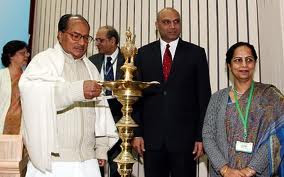
The CBI today claimed that a UK-based cyber expert has “wrongly considered” the creation time of email, which the investigating agency presented in a London court in the Naval War Room leak case, involving main accused Ravi Shankaran.
The agency said there was “no setback” to it in the case and it will present its views before the Westminster Court on 10 October.
Sources in the CBI said the matter of extradition of Ravi Shankaran, accused in the Naval war room case was heard by the court on 19 September where report by a “forensic expert hired by the defence” placed a report.
“It was claimed (in the report) that an email cannot be created, documents attached and sent within two seconds. CBI will present its argument that the expert has wrongly considered creation time of the ‘Temporary’ internet file, related to email in question; which is actually an automatic
process in the computer system to cache open files, which can be recovered in case of any crash” a senior CBI official said.
The official said these files are created every few minutes and hence there is no set back for the prosecution.
The prosecutors had earlier presented secret evidence about an e-mail with attachments of Sir Creek sent by Commodore V Rana to a person called Vic Branson of Inmaty company in Belgium, which they said was owned by Shankaran.
These attachments they claimed had material, which compromised the intergrity of India, and hence Shankaran is punishable under Section 3 of Official Secrets Act 1923 which is titled Penalty for spying for the Enemy and carries a term of 14 years.
The judge noted that the alleged e-mail by Vic Branson to Commodore Rana, produced by the prosecution as the main evidence against Shankaran, had no date and time and an independent court approved expert has confirmed that it is not possible to create an email, type 11 words, attach eight documents and then save it all in two seconds only.
Cyber forensic expert Jason Coyne has, according to the judge, stated that such an e-mail could not have been sent based on the evidence produced by government of India.
Courtesy: http://www.firstpost.com/fwire/accused-extradition-in-naval-war-room-leak-on-track-cbi-88151.html















